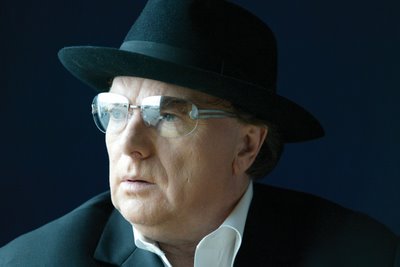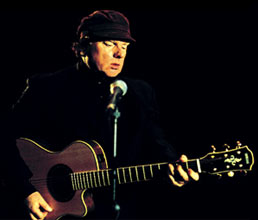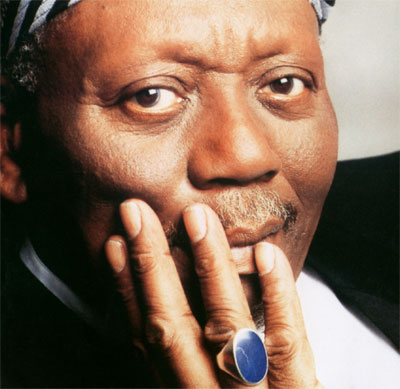
"Mahalia, she was a girl in the slave days. She was dreaming of jubilee all the time. Of better days to come. My people gave me her name."
The big, handsome woman with the gentle face was weary as she stared out of the window of her south side Chicago home at the Indian summer afternoon. She was looking out toward the setting sun, miles away and years ago. Her hands were clasped in her lap. They are graceful hands but not dainty, not soft. The callouses are eloquently present.
Mahalia Jackson spoke again:
"You got to work with your hands. All artists should work with their hands. How can you sing of amazing grace, how can you sing of heaven and earth and all God's wonders without using your hands? My hands demonstrate what I feel inside. My hands, my feet. I throw my whole body to say all that is within me. The mind and the voice by themselves are not sufficient . . ."
Her weariness might have been explained by five straight nights of revival singing at Greater Salem's new church, all the proceeds going to the church's young persons fund "so those children wouldn't have to run around in the streets like sick little chickens."
She had just returned from an appearance on Bing Crosby's television program, which one might have thought added to her fatigue. "Oh, no," she said, "it's just that California's too far away for anybody to go."
She had traveled from Chicago, which has been her home town since the late 1920s. Now 46, Miss Jackson, since her arrival in Chicago, has done her share of manual labor - washerwoman, day factories, domestic.
What about the beauty shop? "Oh, I didn't get to work there 'til I was up on the hog's back," she said - 1943.
When she get to sing? "Sundays and in the evening," she said. "Prof. Thompson of the Greater Salem Baptist church picked me out of the choir. I sang so loud. I just drowned out the others. Remember they had no mikes in churches in those days. I just sang out, and with the Lord's help the people in the back rows heard. I got that from David of the Bible. Remember what he said? 'Sing joyfully unto the Lord with a loud voice.' I took his advice.
"When did I first begin to sing? You might as well ask when did I first begin to walk and talk. In New Orleans, where I lived as a child, I remember singing as I scrubbed the floors. It would make the work go easier. When the old people weren't home, I'd turn on a Bessie Smith record. And play it over and over. Careless Love, that was the blues she sang."
Suddenly her eyes suggested a twinkle, and she added, "That was before I was saved. The blues are fine, but I don't want to sing them. Just remember, all I'm saying about my listening to Bessie and imitating her when I was a little girl; just remember this was before I was saved.
I'd play that record over and over again, and Bessie's voice would come out so full and round. And I'd make my mouth do the same thing. And before you know, all the people would stand outside the door and listen.
"I didn't know what it was at the time. All I know is it would grip me. It would give me that same feeling as when I'd hear the men singing outside as they worked, laying the ties for the railroad. I liked the way Bessie made her tones . . ."
What was it about Bessie? Mahalia squinted thoughtfully and said:
"Listening to a song by Bessie, it almost fits into your own plane. You have a troubled mind, you sense it in her. She's an oppressed woman, a troubled woman. She's trying to get free from something. It's like a preachment, even though it's the blues. More than words, you feel a troubled heart.
"When I was a little girl, I felt she was having troubles like me. That's why it was such a comfort for the people of the south to hear her. She expressed something they couldn't put into words.
All you could hear was Bessie. The houses were thin; the phonographs were loud. You could hear her for blocks."
Before she was saved, had the thought of singing the blues occurred to her? Mahalia laughed.
"My father's people were theatrical," she said. "They worked with Ma Rainey and Bessie and the other great blues singers. They wanted me to travel with them. But my mother's people were very religious. They forbade it. My mother was so independent, too. They told her I could make what was good money at the time. But she said no. And she didn't have a dime. It's easy to be independent when you got money. But to be independent when you ain't got a dime, that's the Lord's test.
"Sure, somebody's always coming up to me telling me if I'd sing the blues, they'd get all kinds of money for me. Or if I'd sing in a night club, I could name my own price. They won't serve drinks while I'm singin' and all that foolishness.
"They just don't understand. I try to explain. I don't mean to hurt their feelings; they don't mean bad. But I just wouldn't feel right singing about that kind of music. After all, I've been saved. The good Lord has helped me in so many ways, and I can't let Him down. He spared me. Remember?"
Several years ago, Mahalia, gaunt and emaciated, lay in a bed in Billings Memorial hospital in Chicago. It appeared to be a most critical ailment, affecting her chest and thus the strength of her voice. That she pulled through and now sings - with as much strength as ever - she attributes to God's amazing grace.
Does she have any idea in how many churches she has appeared?
"Hundreds, I guess," she said. "I can't count 'em. All the way from little store-front churches to big ones. Oh sure, I've sung anywhere people asked me to sing to. I've got to have people to sing to. In front of me. I got to see their faces. Their response. Oh, yes, even when I close my eyes I see them. I can't explain why I close my eyes when I sing a soulful song. I suppose it's because I don't want to lose what's inside me all at once."
The feeling. There was a feeling Blind Frank had. He was one of the earliest singers of spirituals she remembers.
"He used to come around the churches in New Orleans and play his guitar. Places where the Holiness folks gathered, the Sanctified people. They sang the way I liked it, with free expression.
"That's where I think jazz caught its beat. From the Holiness people. Long before Buddy Bolden and Bunk Johnson, they were clapping their hands and beating their tambourines and blowing their horns."
On the state of spiritual singing today she noted, "they can't be sung exactly as they were sung in the slavery days, because today the Negro people have a new type of hope. They don't have to hide any more, like the slaves or the Jews in Egypt.
"Oh yeah, we still have troubles, plenty burdens. So it still has to be from-the-heart singing. Not like some of those quartets you hear on the jukeboxes. Making a gimmick out of this music, this music which is the hope of humanity. I'm so tired of these singers who make a mess of things. They don't care about religion or the Lord, taking His name in vain the way they do.
"It's taking our great music, like taking the country's flag and stepping on it. These songs have been the hope and salvation of our people. I get mad."
About jazzmen playing spirituals, she said, "If they play for their own comfort, for their real feeling, all right. But if they gimmick it, they're no better than those gimmicky jukebox singers."
Mahalia arose and mimicked a bloodless soprano in what was for a moment a wildly comic interpretation. But then she was serious about music again:
"When it comes to singing anthems, that's something else. Like the Hallelujah chorus from The Messiah. But you have to have the right voices, good strong young voices. Our older people used to sing them in churches when I first came up to Chicago. They seemed uncomfortable. I know they'd have felt a lot better with spirituals or gospel songs or just plain hymns. They seemed so stiff, not free.
"No matter what kind of songs people sing, it must come natural to them. They shouldn't just try to sing something just because they feel it's the proper thing to do. Then the real person gets lost. He's away from his roots."
A pause. Any feeling about modern jazz . . .?
"I prefer listening to the old style because I'm used to it," she replied. "I don't know which direction they're going today. Maybe I'm wrong, but I feel they've gone too far away from roots.
"When I was small and they played jazz, the houses just talked, spoke the music. Some of the progressive jazz sounds to me like lost little children, who don't know what road they're on or what they're doing or why they're doing it. Maybe they're reaching out for something good, but I just don't understand it."
"Today so many people call gospel songs 'jazz.' They don't know, they just don't know. Just as the spiritual came from the slavery days, the gospel song came from liberation.
"The jubilee songs that sprang up after the Civil war led into what we call gospel songs today. Nobody Knows the Trouble I've Seen or Swing Low Sweet Chariot. They're spirituals. What a Friend I Have in Jesus or I'm so Glad Jesus Lifted Me. They're gospel songs."
There came a change in the tempo and tenor of the conversation that - like her songs - is sometimes soft and deeply moving and at other times earthly and exuberant. She offered random observations of people, places and things, the lost and found . . .
Billy Holiday: "I never knew her, never met her, never knew what made her do the things she did. But when I saw her last year on the CBS show, The Sound of Jazz - you know that Lively Arts series? -I caught that cry from her. I know everybody who watched that show caught something from her. She looked like she knew trouble. She sounded like it."
Miss Jackson feels strongly about Europe, where she was recognize and accepted long before white America did so. Why were Europeans seemingly able to appreciate her so readily?
"People are people the world over," she said, "and everybody can feel suffering when you sing a spiritual. We all carry different kinds of burdens, and each person interprets the spiritual in his own way. It's more than just words. It's the feelin. It lingers after the song is ended."
What of tomorrow?
"I hope one day I can teach people to sing songs with the deep feeling they once had," she said. "We shouldn't forget our roots, our history.
"Sometimes I hear how music is supposed to be sung; there are certain notes I want to make. I get to my pianist, Mildred Falls. We put it down. So in this way I'm able to capture the voice within me. Oh, people should study, of course. But they should also listen to what is inside themselves. You first must sing for yourself. When you make that peace within yourself, then you can reach out to the others. If I do nothing else, I hope to teach people that. Each to find his way."
Mahalia Jackson found her way. She found it long before Move on up a Little Higher sold a million in the mid-40s. Adversities and detours were present.
But always Mahalia has made her own free-wheeling way onto the main road.
She'll never get lost.

























